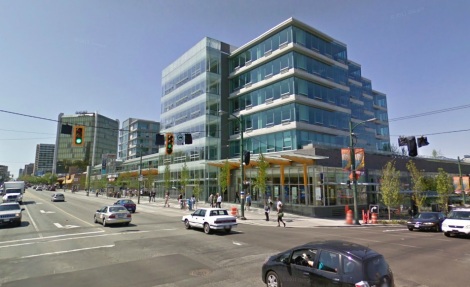The recent debate in Vancouver over a rezoning application from Rize Alliance to develop a site at Broadway and Kingsway has become incredibly polarized. You are either for or against it. On one side is a residents’ group, RAMP, who are opposed to the height and scale of the proposal, while the other side argues this proposal is necessary for a denser and more sustainable urban future for the City. There doesn’t seem to be a lot of middle ground in this debate.
What surprises me is how easily terms like “density” and “height” and “form” are thrown out to either support or critique each side. The impression I get is not only are these terms being used interchangeably, they are unfairly being used to label the other side. Are you anti-density if you do not support this development? Do supporters simply want Vancouver to become a tower city? What is the best form of development?
To answer these questions, it is so important to differentiate the terms density and height. This what we need to remember:
Density does not equal height. (Height can equal density)
Density is a ratio, whereas height is a form. In other words, density can be achieved without tall towers, but must be considered over a larger area of land.
To say someone is anti-density (or more commonly anti-development), when they actually do not support a form of development, would not be accurate.
We can achieve a denser and energy efficient City without the tower form, as Patrick Condon, UBC SALA and SCARP students have determined. To do so we must look to infill a much larger area of the City along arterial transit routes. Brent Toderian has also argued for “density done well” in Vancouver, which means contextual and gentle density.
However, the tower form (think downtown, Metrotown) offers economic efficiency. Without having to increase the land area of development, adding floors (height) to a single building increases the density, and subsequently the economic return. This additional return if not maintained as profit, can be translated (mandated) into public amenities.
But this doesn’t mean it should be a choice between towers or public amenities. The conversation around development proposals such as the one from Rize should respect the local context, understand the meaning behind density and height, and realize the land potential of Vancouver in 50+ years, not just today. It is also important to remember that one development project alone will not solve all our issues of housing affordability, energy efficiency and environmental sustainability – it is one piece in a much larger puzzle.





Reblogged this on Andrew Trevor Jones.
Can we build high density neighbourhoods without building towers? That’s the theme of a Community Forum being hosted by RAMP on March 19th at 6:45pm at 2881 Main St. Guest speakers include urban design specialists and planners Lewis N. Villegas, Professor Patrick Condon and Jim Lehto. There’s more information available at this link: http://t.co/8L0KG2ni
Thanks for the heads up, just posted the event information!